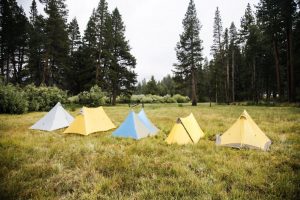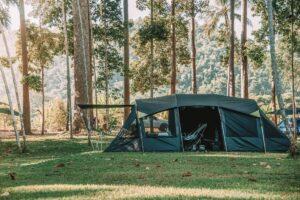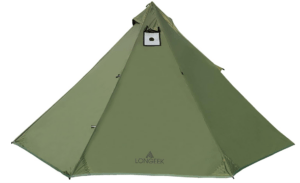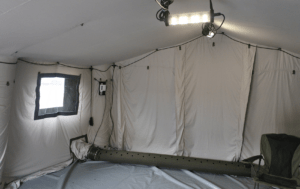How to put up a tent in bad weather and in difficult conditions
Table of Contents
At first glance, setting up a tent is a simple matter, once set up and further along the thumb. But everything becomes more complicated when it rains, the wind pulls the awning out of your hands, or under your feet a meter of puffy snow, in which it is impossible to fix the pegs. We learn to put up a tent in any conditions, even if around Armageddon.
Putting up a tent in the rain
First and foremost, you need to set up a tent in the rain quickly so that it gets as wet as possible. The speed of setting up a tent depends on its design.
A tent with an inner frame needs to be assembled especially quickly. With this design, an inner tent is first installed, then an awning is thrown on top. If you mess around for a long time, the inner tent will get wet through, in order to avoid this, we proceed as follows:
- collect arcs;
- quickly spread the inner lining, put arcs on it and throw an awning on top;
- climb under the awning and continue the assembly under the awning. This is not very convenient, but there is a chance to keep the inner tent dry.
It is easier to set up a tent with an outer frame in the rain: first an awning is put up, then an inner liner is attached to it, so that it does not have time to get wet. But you need to act quickly and carefully so that the walls of the awning and the inner tent touch as little as possible in the rain.
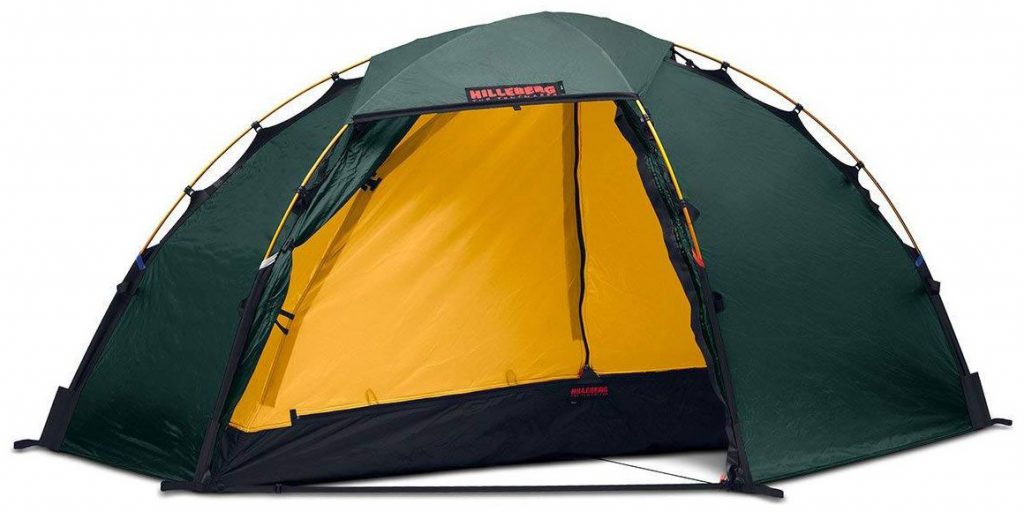
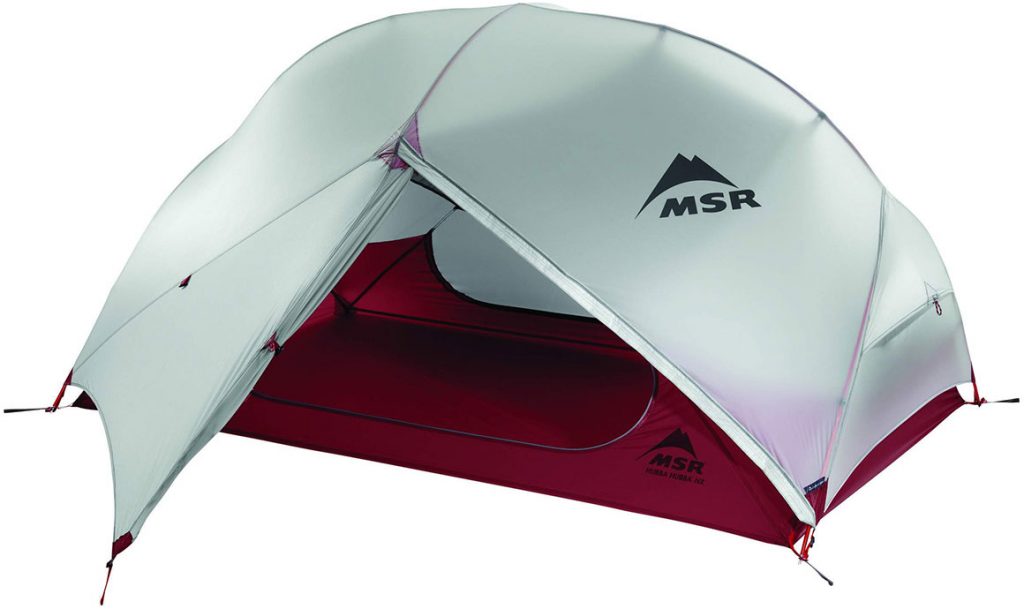
If you have an awning and there are trees in the tenting area, stretch it out first and then assemble the tent under it. An awning is generally a useful thing, especially in a large group and under a bad prognosis. Under it, it is convenient to cook and gather in a company during the rain.
If there is no awning, you can look for a tree with a spreading crown and assemble a tent under it, then move it to a convenient place and secure it with pegs, remembering to stretch it properly.
The tent should always be at hand to get it in seconds.
Otherwise, while you are looking for it in the bowels of the backpack, the rain will flood all its contents.
Setting up a tent in the wind
Putting up a tent in strong winds is difficult. The awning flutters and breaks out of the hands, and the already assembled, but not fixed tent strives to fly into the sky. Therefore, you need to hold it tight and act quickly.
- Appreciate the opportunity to wait out the wind and set up a tent when the situation becomes more favorable. If you need to hide as quickly as possible, or you think that in the future the tent will be demolished even more, you can try to find a natural shelter or build it yourself.
- Prepare something heavy to keep the tarp on the ground so it doesn’t fly away while you put the liner on.
- Unpack the tent as close to the ground as possible and immediately place the load on it. If there is nothing suitable nearby, press it down with your knee or hand.
- Collect the arcs, and put the pegs in your pocket. They should be at hand so that you can immediately get them and fix the awning.
- Determine the direction of the wind. The tent should be placed with the narrow side towards the wind so that it creates the least resistance. Do not put the entrance to the wind, otherwise, with each unfastening of the zipper, it will inflate like a sail.
- Stand with your back to the wind. The wind will inflate and straighten the inner tent, you just have to quickly fix it in the corners with pegs and attach it to the arcs.
- First of all, fix the awning on the leeward side. Let the tent itself lie unfolded, pressed down with something heavy. As soon as it becomes possible to lift and install it, do it as quickly as possible.
- First fix the tent with pegs and only then insert the arcs. If you insert the arcs and do not secure the tent, it can easily fly away.
- Toss the backpack inside when the inner flap is fully secured. Put other things in to make the tent more stable.
- Attach the outer tent. Stand with your back to the wind again – it will straighten the awning and press it against the tent. Start fastening from the side closest to you.
- Check that everything is secure. All braces are well stretched, and the pegs are firmly driven into the ground. The stronger the wind, the better the awning should be stretched.
In extreme conditions, when the wind is so strong that it bends arcs, a windproof wall is built around the tent from large boulders or blocks of shirned snow. If the tent has a skirt, it is pressed down with stones or snow.
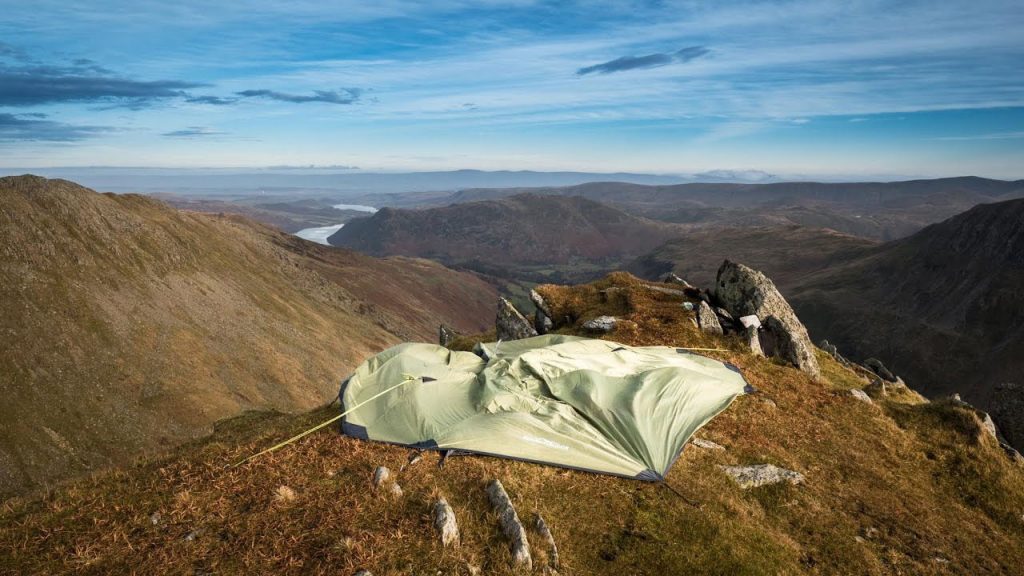
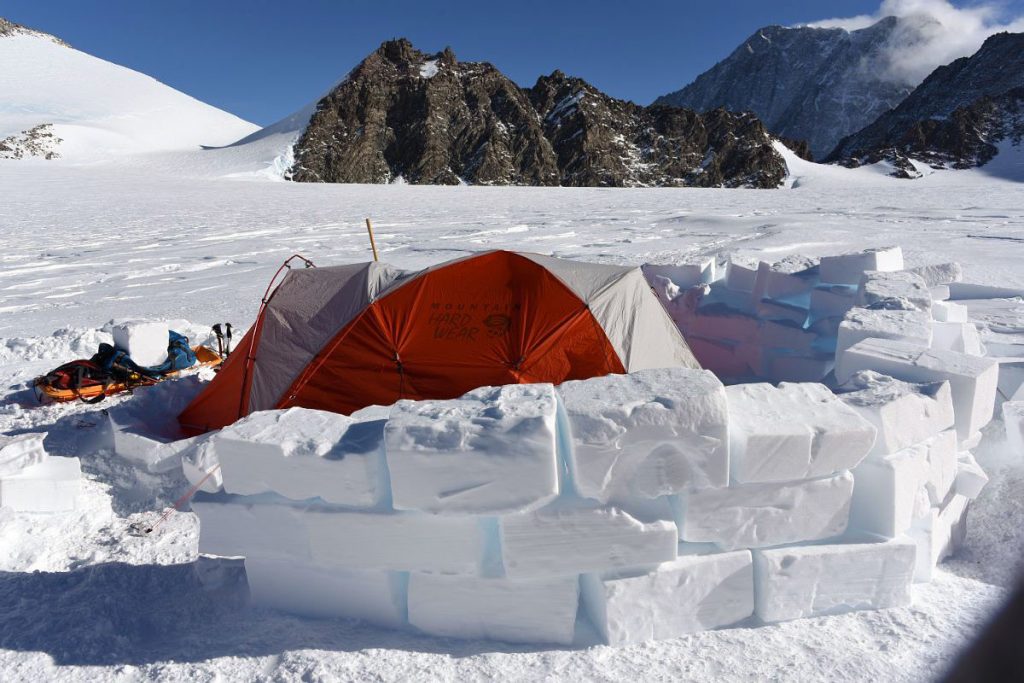
Setting up a tent in the snow
On the snow, finding a flat and hard surface is much more difficult. Moreover, there is a possibility that you will be covered with snow. Therefore, when setting up a tent in snowy conditions, there are some recommendations.
- When choosing a parking spot, make sure that you are less likely to be covered in snow or, worse, covered in an avalanche. Assess the area around you to make sure that the camp is not located in an avalanche area. Be careful and don’t go to the edge of the cliff.
- Take the time to choose the most level and firm place. Ultimately, this is faster than leveling and compacting the surface yourself.
- Level or even dig a spot for a tent. Before setting up the tent, you need to trample the snow well with your feet, skis or a shovel (it should be mandatory in a winter campaign) so that holes and mounds do not form under the floor from constant movements.
- Make sure you do everything you can to avoid getting snowed in from the side of the entrance.
- To secure the tent, use special snow pegs or snow anchors.
When setting up a tent in the snow, ordinary pegs practically do not hold. Therefore, it is necessary to use not ordinary short pegs, but strong stakes with a wide curved profile of the “snow wing” type or special anchors – bags that are filled with snow, buried deeper and rammed.
If there are no stakes, you can use improvised means – skis, ski poles, ice axes, cats, and instead of anchors – plastic bags, plastic bottles, dirty socks. But practice shows that sticks and ice axes may be needed in the camp, so it is better to use special devices to stretch the tent.
To set up a tent on ice, you need screw-in pegs or ice screws for tents. Outwardly, they look like climbing ice screws and are also screwed into the ice, only they cost significantly less, because they are designed for other loads. It is better to take not hollow ones, since fragments of ice and snow are clogged into such stakes during screwing, because of this it is impossible to re-drive them into the ice.
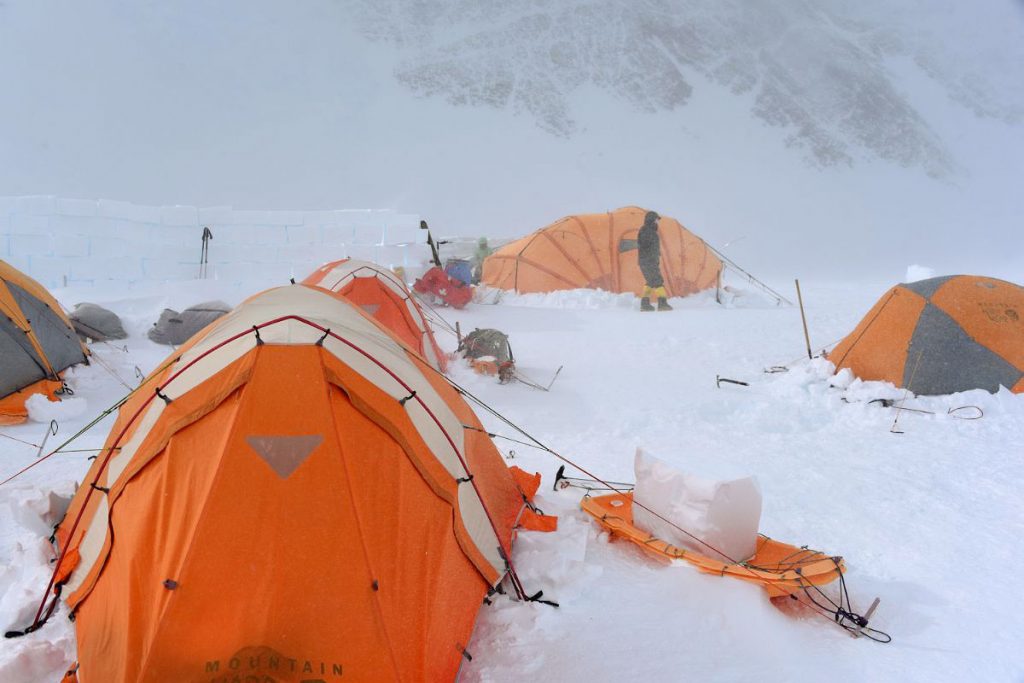
How to put up a tent in the sand
To fix the guys on sand, peat and any other unsteady surface, you need special wide pegs or pegs with wings that prevent them from pulling out of the ground.
It is even better to additionally use sand anchors. In extreme cases, regular pegs can be crushed at the base with large stones, if they are found nearby.
Trekking poles can also be used to fix the tent on the sand – they sink deep into the sand and hold well.
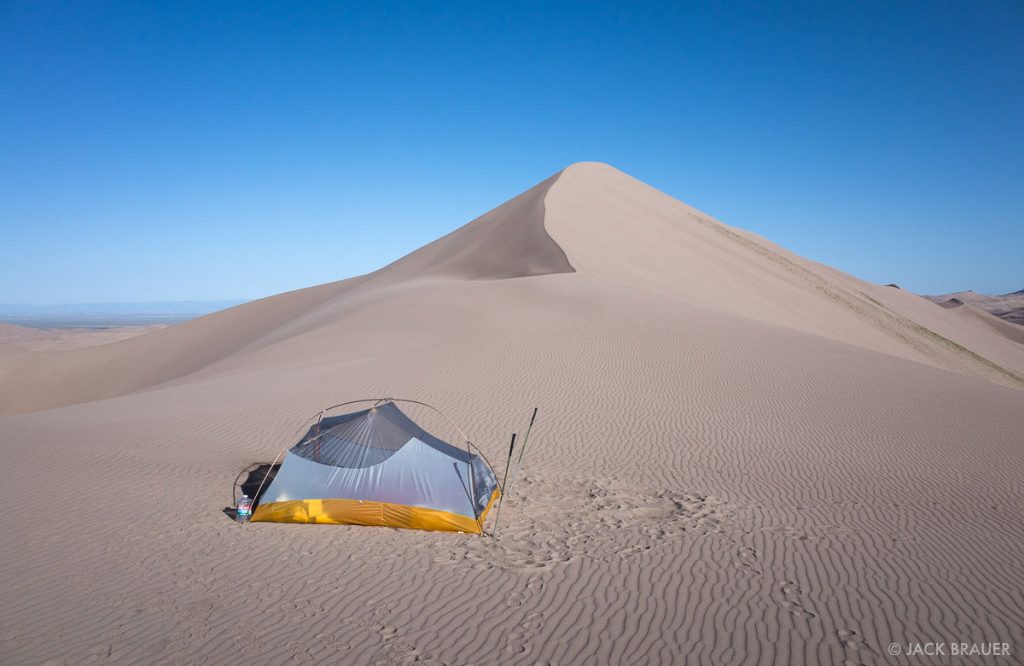
How to anchor a tent on hard ground and rocks
It is difficult to drive the pegs into hard ground or a rocky surface. Be smart and use these tips:
- Prepare the site. Remove protruding sharp stones, pick up large and flat ones, or simply fill the entire space with small stones, gravel or sand. For rocky and uneven surfaces, it is better to use an additional dense floor – a footprint. He will not let sharp stones cut through the thin bottom of the tent.
- Tie a guy to the middle of the peg, lay it flat on the ground and press down with something heavy, such as a stone or log. In this case, you can also use a branch instead of a peg for greater reliability.
- Stock up on repsnur in advance. It is tied to the free ends of the guys and fixed on large stones or nearby bushes or trees. This is especially true if you are planning to set up a tent on a rocky beach or on the rocks.
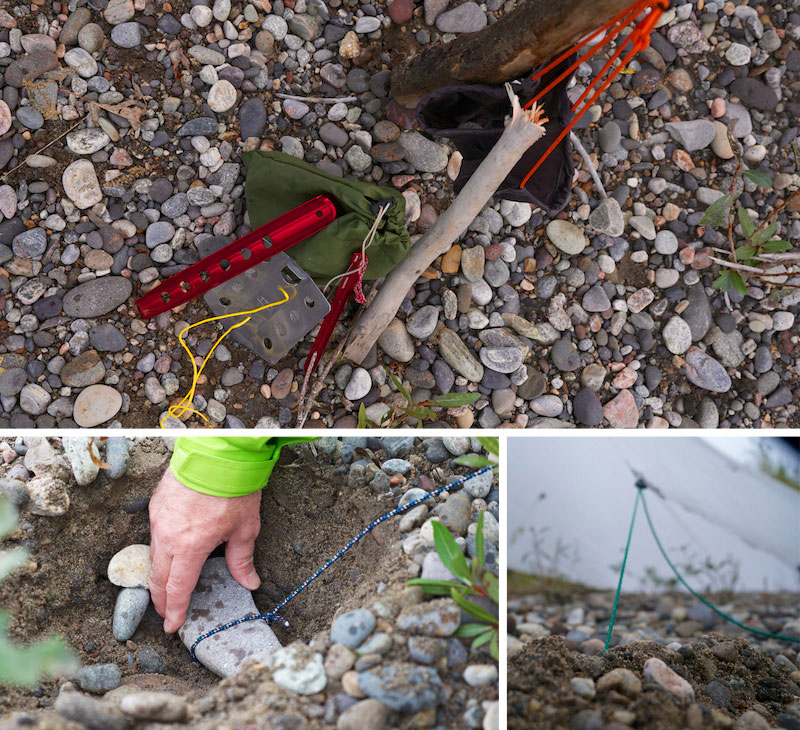
Get ready for possible troubles when setting up a tent in advance. If possible, study the intended terrain and consider what fasteners you should take with you.
There will never be a superfluous coil of cord. You can put up a tent at speed at home or in the park, try different installation options, make anchors and get out more often on weekend hikes, where extreme weather is not as dangerous as on a long trip.
